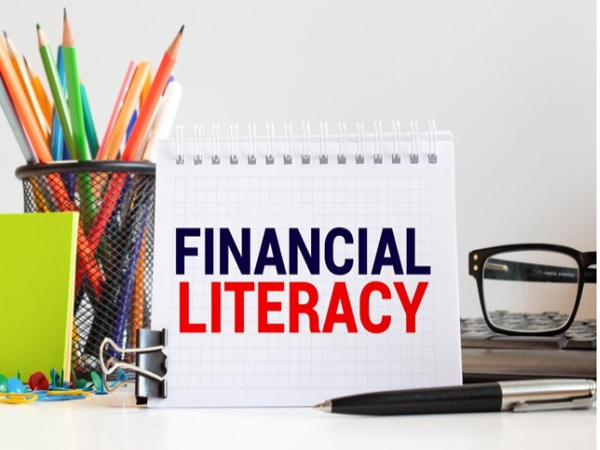Are you ready to take control of your financial future? Whether you're just starting your career or looking to improve your money management skills, this comprehensive guide to financial literacy is your ticket to financial freedom. In today's complex economic landscape, understanding the basics of personal finance is more crucial than ever. This step-by-step guide will equip you with the knowledge and tools you need to make informed financial decisions, build wealth, and secure your financial future. Let's dive into the world of financial literacy and transform your relationship with money!
Step 1: Master the Art of Budgeting
The foundation of financial literacy begins with creating and sticking to a budget. A budget is your financial roadmap, helping you track income, expenses, and savings goals. Here's how to get started:
- Track your income: List all sources of income, including salary, investments, and side hustles.
- Categorize expenses: Divide your spending into fixed (rent, utilities) and variable (groceries, entertainment) expenses.
- Set financial goals: Identify short-term and long-term financial objectives.
- Use the 50/30/20 rule: Allocate 50% of your income to needs, 30% to wants, and 20% to savings and debt repayment.
Pro tip: Embrace budgeting apps like Mint or YNAB to automate the process and gain real-time insights into your spending habits.
Step 2: Build a Robust Emergency Fund
An emergency fund is your financial safety net, protecting you from unexpected expenses or income loss. aim to save 3-6 months of living expenses in a readily accessible account. Here's how to build your emergency fund:
- Start small: Begin with a goal of $1,000 and gradually increase it.
- Automate savings: Set up automatic transfers to your emergency fund account.
- Use windfalls wisely: Allocate tax refunds, bonuses, or gifts to boost your emergency fund.
Did you know? According to a 2021 Bankrate survey, only 39% of Americans could cover a $1,000 emergency expense from savings.
Step 3: Tackle Debt Strategically
Understanding and managing debt is crucial for financial health. Follow these steps to take control of your debt:
- List all debts: Note the creditor, balance, interest rate, and minimum payment for each debt.
- Prioritize high-interest debt: Focus on paying off credit cards and personal loans first.
- Consider debt repayment strategies:
- Debt avalanche: Pay off highest interest debt first.
- Debt snowball: Pay off smallest balances first for psychological wins.
- Explore consolidation options: Consider balance transfers or personal loans to reduce interest rates.
Remember: Not all debt is bad. Mortgages and student loans can be investments in your future when managed responsibly.
Step 4: Demystify Credit Scores and Reports
Your credit score is a crucial factor in your financial life. Here's what you need to know:
- Understand credit score factors:
- Payment history (35%)
- Credit utilization (30%)
- Length of credit history (15%)
- Credit mix (10%)
- New credit inquiries (10%)
- Check your credit report regularly: You're entitled to one free report annually from each major bureau.
- Dispute errors: Report any inaccuracies to the credit bureaus promptly.
- Practice good credit habits: Pay bills on time and keep credit utilization below 30%.
Step 5: Master the Basics of Investing
Investing is key to building long-term wealth. Start with these fundamentals:
- Understand different investment vehicles:
- Stocks
- Bonds
- Mutual funds
- Exchange-Traded Funds (ETFs)
- Learn about risk and diversification: Don't put all your eggs in one basket.
- Start with retirement accounts: Take advantage of tax benefits in 401(k)s and IRAs.
- Consider low-cost index funds: These offer broad market exposure with lower fees.
Pro tip: Start investing early to harness the power of compound interest. Even small, consistent investments can grow significantly over time.
Step 6: Navigate the World of Insurance
Insurance protects your financial well-being. Understand these key types of coverage:
- Health insurance: Protects against high medical costs.
- Life insurance: Provides for your dependents if you pass away.
- Auto insurance: Covers accidents and liability.
- Homeowners/Renters insurance: Protects your property and belongings.
- Disability insurance: Replaces income if you're unable to work.
Regularly review your coverage to ensure it meets your current needs and shop around for the best rates without sacrificing necessary protection.
Step 7: Plan for Taxes and Retirement
Effective tax planning and retirement savings are crucial for long-term financial success:
- Understand your tax bracket and deductions: Take advantage of all eligible tax breaks.
- Maximize retirement contributions: Contribute to 401(k)s, IRAs, and other retirement accounts.
- Consider tax-efficient investing: Utilize tax-advantaged accounts and understand the tax implications of different investments.
- Plan for required minimum distributions (RMDs): Understand when and how much you need to withdraw from retirement accounts.
Did you know? According to a 2022 Vanguard study, the median 401(k) balance for those aged 65 and older is $87,725.
Conclusion:
Congratulations! You've just taken a significant step towards mastering financial literacy. By following this 7-step guide, you're well on your way to making informed financial decisions, building wealth, and securing your financial future. Remember, financial literacy is an ongoing journey. Stay curious, keep learning, and don't hesitate to seek professional advice when needed. Start implementing these steps today, and watch as your financial confidence grows and your money works harder for you. Your future self will thank you for taking control of your finances now!


.jpg)





.webp)






(0) Comment(s)
Write a comment